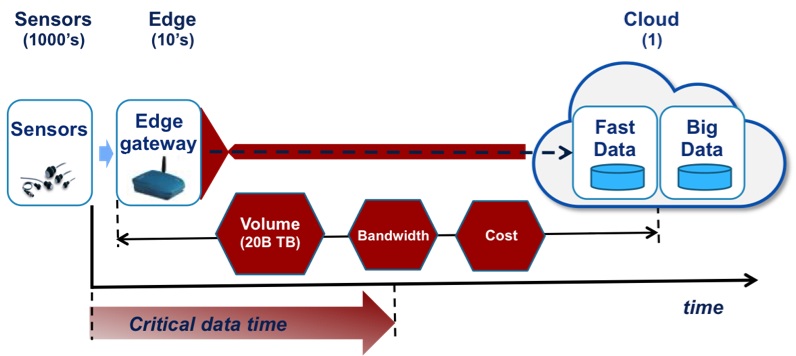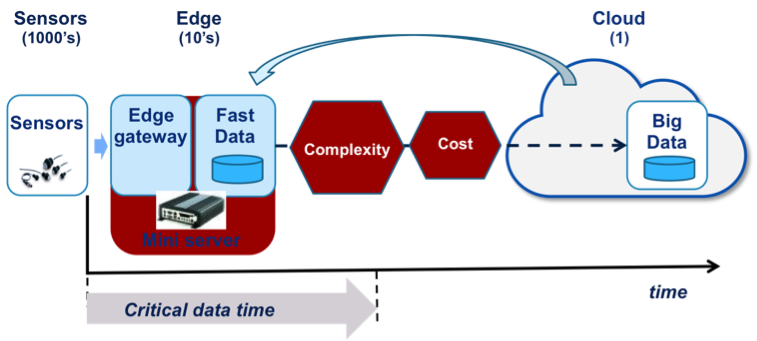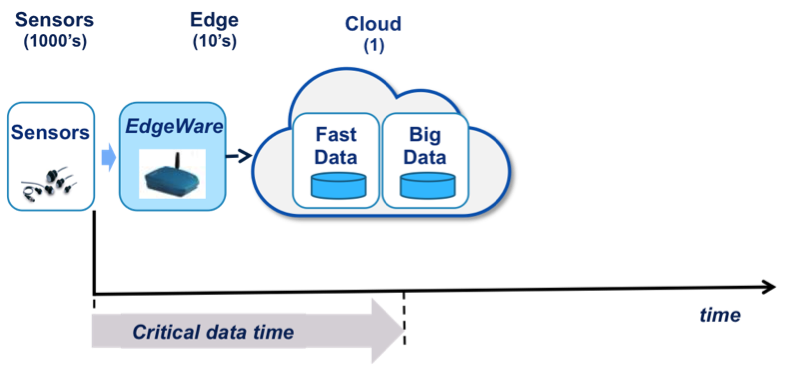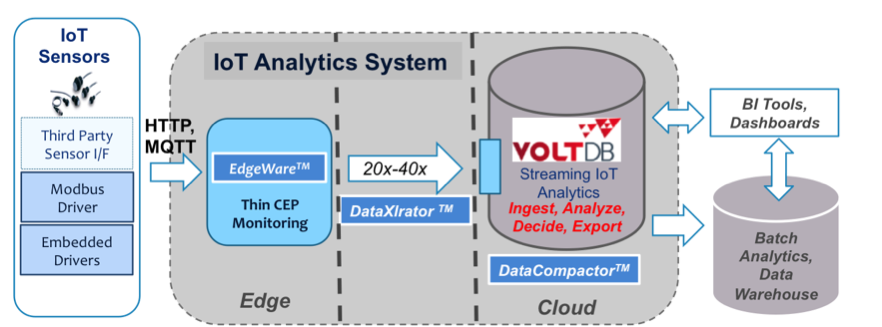This post was contributed by Prateek Gera, Founder and Chief Product Officer of Volt Active Data partner company Teevr Data.
From our experience working with many customers and partners, Enterprise IoT, IIoT, promises to bring a new business paradigm with pervasive, inexpensive and low power sensors measuring, monitoring and analyzing everything on a plant floor, oil rig/mine or vehicle. Customers realize that the real IIoT breakthrough is how these sensor data drive Big and Fast Data Analytics, which for the first time can improve productivity, operational efficiencies, reduce costs, and create new business opportunities.
Unlike M2M and SCADA systems which allow machines to talk to each other to command, control and coordinate local assets, the tremendous business value from IIoT comes through the rapid analysis of streaming sensor data or Fast Data combined with the analysis of a large volume of sensor data over longer time periods with other enterprise data or Big Data. The compelling customer benefits such as new methods to prevent unplanned production downtimes, optimize material flow, and improve product design now become possible with both Big and Fast Data Analytics
Barriers to big and fast data analytics for IIoT
Unlike most consumer IoT solutions, IIoT is characterized by high sensor density at a site or edge (for example an oil rig). As shown in Figure 1, a typical IIoT architecture has thousands of sensors, which communicate to 10s of local edge aggregators or gateways that communicate over the Internet infrastructure to a single customer’s cloud data center. Our customers have typically invested in Big Data Analytics cloud infrastructure and various other cloud applications such as ERP or CRM and now want to leverage this investment for IIoT analytics.
The weak data link: the edge gateway to the cloud
With 1000s of sensors at sites generating rapid measurements at sub-second intervals, data volumes can easily run into terabytes of data per day. As shown in Figure 1, these remote sites’ edge gateways are connected over various wireless networks from expensive satellite, to 3/4G cellular or even point-to-point radio links. This network data link easily becomes the weak link in getting sensor data to the cloud, thereby making the most valuable IIoT analytics benefits too costly or technically unfeasible (e.g., the connection’s latency is too high).
Critical data time for fast cloud analytics

Figure 1: IIoT System’s Barriers to Fast Data/Analytics Success
The large volume of sensor data inherent in IIoT is also a time constraint. This critical data time, depicted in Figure 1, represents the minimal acceptable time for critical or fast steaming sensor data to reach the cloud to permit real-time analysis. As you would expect this critical time varies with applications within a market, such as midstream Oil & Gas exploration data where hours may be acceptable, to midstream pipeline leak detection where seconds are critical. However, most sensor data has a limited time period, necessitating real-time analysis to capture business value – for example, immediate detection of a life-threating situation in a mine. This requires an end-to-end IIoT architecture that can support fast analytics and have large volumes of data arrive at the cloud in less than the critical application’s time.
Proposed IIoT Architecture: “big data” edge approach
As shown in Figure 2 a proposed intuitive approach to this ‘large and fast data” at the edge-to-cloud data problem is to increase the edge complexity with a mini-server and then provision, deploy and manage Fast Data analytics at each of the 10s of edge locations.

Figure 2: Proposed IIoT architecture
Even though the critical time for Fast Data Analytics is now acceptable, in practice this approach creates a more complex IIoT architecture resulting in a significant increase in a customer’s total cost of ownership:
- Big data edge mini-severs and fast data analytic software in locations where IT staff is unavailable or simply too expensive to manage.
- Relies on a distributed on-premise approach that creates too many points of management for a customer’s Big Data Analytics system, consequently increasing both complexity and cost.
Teevr Data’s simplified IIoT Architecture: “Small data” edge approach
In contrast, as shown in Figure 3, Teevr Data’s EdgeWare enables a simple, scalable IIoT architecture that enhances our customers’ investments in fast and big data cloud analytics, without the need for big data technologies at the edge.
 Figure 3: Teevr Data’s EdgeWare for a simplified IIoT architecture
Figure 3: Teevr Data’s EdgeWare for a simplified IIoT architecture
Teevr Data’s EdgeWare is a “small data” edge solution that plugs into a customer’s current cloud infrastructure without the need for expensive on site IT systems & servers at the edge gateway. EdgeWare has two major functions:
- DataXlrater accelerates a customer’s current edge to cloud connection, increasing end-to-end data throughput 20x-40x (patent pending).
- Small Data Analysis automatically builds data models that can be executed efficiently on a customer’s existing edge gateway for rapid “snapshot” anomaly detection and data “noise” reduction that further reduces the amount of data transmitted to the cloud.
As shown in Figure 3, Teevr Data’s EdgeWare solution allows data to reach the cloud in less than the critical data time for most fast streaming analytics to be accomplished by Fast Data cloud vendors such as Volt Active Data.
Teevr Data and Volt Active Data: Accelerating value for IIoT
Teevr Data’s partnership with Volt Active Data provides a lower-cost customer solution to IIoT analytics that is both fast, scalable and leverages a customer’s investment in cloud infrastructure. As shown in Figure 4, Teevr Data links sensor data to the cloud for streaming, real-time data to Volt Active Data, where streaming analytics on global data from various disbursed locations is performed.

Figure 4: Volt Active Data & Teevr Data offer a simple, low cost & fast IIoT analytics system
Teevr Data and Volt Active Data enable IIoT analytics at the speed of your sensor data! To learn more about how our solution can help you, contact us at info@teevr.io




